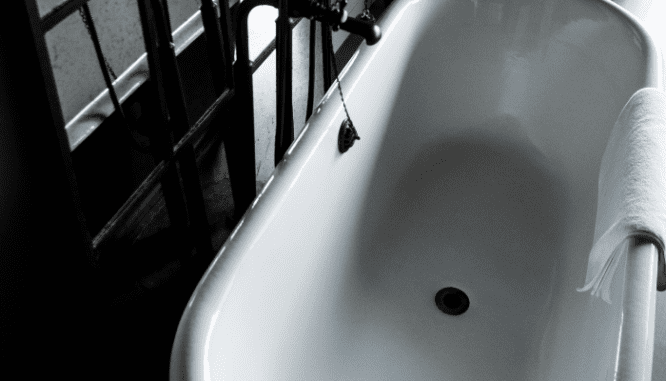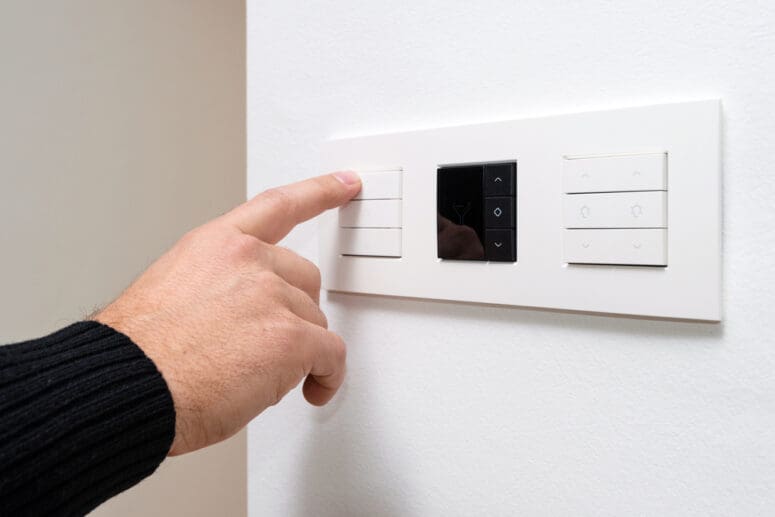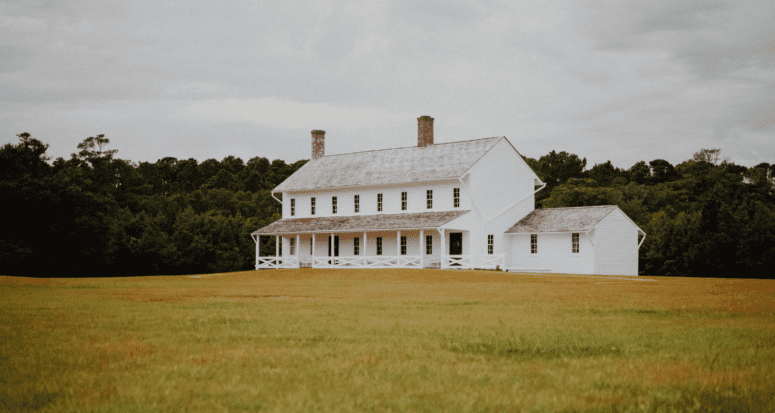12 Incredibly Affordable Ways to Fix My Home Before Selling It
- Published on
- 7 min read
-
 Valerie Kalfrin Contributing AuthorClose
Valerie Kalfrin Contributing AuthorClose Valerie Kalfrin Contributing Author
Valerie Kalfrin Contributing AuthorValerie Kalfrin is a multiple award-winning journalist, film and fiction fan, and creative storyteller with a knack for detailed, engaging stories.
It’s a dilemma many sellers face before they put their house on the market: “I need to fix my home, but money is tight…” Thankfully you don’t need to do a complete renovation of your home for the sake of selling it. However, you’ll also regret doing nothing.
The average American household spent $13,138 on home services in 2020, including $4,832 on non-discretionary maintenance and emergency expenses, according to a recent report from HomeAdvisor. If you can afford to do that, great — if not, there is hope yet.
A little elbow grease and a few hundred dollars in work can make a huge impact against your competition, says Eric Broesamle, top-selling real estate agent in Mount Clemens.
Oriana Shea, a top real estate agent in Long Beach, California, echoes: “All of these things that may not cost very much in reality mean tens of thousands of dollars in discounts to a buyer. In their mind, it translates to: This home needs work.”
Not sure where to start? We put together 12 affordable ways to fix up your home so that you can get the offers you’d like without breaking the bank.

1. Buff and polish the hardwood floors (or clean your carpet).
Unless your wood floors are severely damaged, worn, or stained, there’s no need to completely refinish them, Shea says. Refinishing wood floors costs between about $1,000 to $4,000 (about $800 to $1,300 for a 16×16-foot room), regardless of the wood.
Instead, refresh hardwood flooring with ordinary wear and tear through buffing and polishing, Shea says. Also called screening, buffing removes the finish without cutting into the wood (it works best on floors with a non-waxed polyurethane finish). You can hire someone to complete this for about $200 to $250 for a 15×15-foot room. Then work with a flooring professional to apply a special polish manually with a microfiber dust mop, or take on that project yourself for about $100, plus about $50 for the polish.
Have wall-to-wall carpeting instead? If there are no rips, snags, or set-in stains and the color or style isn’t outdated, just clean it.
“Oftentimes, a good professional carpet cleaning company just needs to come in there, and you would think the carpet was new,” says Geoffrey Adams, a top-selling agent in Phoenix, Arizona, who likes the acoustics and feel of carpeting in his own home. Carpet cleaners charge by room or by square footage, so expect to pay about $25 to $75 per room or from $200 to $330 for 1,000 to 1,500 square feet.
2. Redo the caulk around the tub and sinks.
Several projects our agents recommend focus on the bathroom and the kitchen because those places traditionally draw the most buyer attention. “That’s really where you need to focus most of your efforts in money and time,” Broesamle says.
The National Association of the Remodeling Industry estimates the average cost of a bathroom renovation at about $35,000. That’s roughly $875 per square foot for a 40-foot bathroom or $350 per square foot for a one that’s 100 square feet, both of which sound overwhelming when you don’t have a lot of discretionary cash.
But just replacing the toilet and tub can make a huge impression, says Douglas Huebner, CEO of the home design and renovation company The Habitatilist and a top New Jersey real estate agent serving the Maplewood, Montclair, and South Orange areas.
If that’s still too much of a splurge, Huebner suggests considering the “ick factor.” “If you walk into a bathroom that’s not been touched in 15 or 20 years, what’s the ickiest thing?” he says. That’s what you need to fix.
We’d bet that the caulk around the tub, shower, or bathroom sink catches your eye. This often looks dingy, dirty, or moldy after many years. But removing and replacing caulk is quite simple — Home Depot has a step-by-step guide — and can cost less than $50 for supplies such as caulk, a paint scraper, and a utility knife.
3. Get rid of any mold, especially in the bathroom.
Take care of any unsightly mold in the grout around the tub or shower tiles with cleaners such as CLR or Bar Keepers Friend, two of our agents’ favorites, or a mix of water and bleach. Bar Keepers Friend also can tackle hard water stains, mineral deposits, soap scum, and refresh stainless steel fixtures. Just be sure to wear gloves. The feldspar and oxalic acid can irritate skin.
If the mold is really bad, replace the old grout with new stain-resistant polymer additive grout at an average cost of about $800 for 80 square feet of 3×6-foot wall tiles.

4. Reglaze the bathtub.
For a bathtub with minor stains and scratches, a one-time but affordable upgrade is to refinish or reglaze it, Huebner says. This can cost about $200 to $650 if you hire a professional. (You may have to leave the house for a day so that the materials used can ventilate properly.) If you don’t use an abrasive cleaner, the refinish or glaze can last for a while.
But you also can do this yourself. An airless paint sprayer provides better coverage and a smoother finish than a roller, says Kevin Paffrath, a real estate agent for a decade in Ventura, California, who now runs the YouTube renovation and property investment channel Meet Kevin with nearly 1 million subscribers. You can rent an airless paint sprayer for the project for about $39 to $93 per day, depending on size.
Paffrath recommends the Rust-Oleum Tub And Tile Refinishing 2-Part Kit in White, an epoxy acrylic that adds a high-gloss finish for about $20 to $30. Added costs for this project include prepping supplies such as painter’s tape, sandpaper, and a drop cloth.
5. Paint your cabinets
Home design shows and real estate agents often highlight the power of paint, a truly cost-effective fix. Painting the dated finish on kitchen and bathroom cabinets updates them instantly, especially if you use contemporary neutrals and new hardware.
Shea did this recently for sellers whose kitchen had tangerine walls and cabinets. “It was going to be a tough sell for a buyer to wrap their head around what this kitchen would look like.” She recommended a pale blue for the walls and white for the cabinets for contrast. The 2020 Houzz Kitchen Trends Study ranks gray or navy blue as the top color choices beyond white.
Hiring a professional to repaint your cabinets costs roughly $1,000, but you could do this yourself for about $200 to $600, depending on paint and other supplies. An airless paint sprayer produces a near-factory finish, Paffrath says.
He suggests using a high-quality primer such as Zinsser Cover Stain, which usually eliminates the need to sand the cabinets first, and a quality top coat like Behr. Above all, don’t rush. Remove the cabinet doors and hardware so that you won’t miss a spot, and mark off what you don’t want to paint with painter’s tape and drop cloth.
6. Redo the kitchen backsplash and replace dated countertops.
A minor kitchen remodel costs about $10,000 to $15,000, including new appliances. But there are more affordable tweaks you can make. Pep up the backsplash with a timeless subway tile pattern for a few dollars per square foot. These self-adhesive Metro Blanco peel and stick tiles come in several colors that can contrast with your cabinets. You also can tile a backsplash using an adhesive mat and pre-mixed grout for about $100.
If you paint the cabinets or add a backsplash, you might notice that your countertops don’t match — or they could use some TLC. Huebner says that formica and butcher block can look sharp for as little as $75 to $150 per square foot. With the tangerine kitchen that Shea transformed, she replaced the countertop with affordable quartz. If the bathroom countertops also look tired, replacing those as well costs less than springing for a new vanity. (Plus, a little paint on that cabinetry couldn’t hurt, either.)
7. Install modern hardware for a fresh look.
Door knobs, cabinet handles, and hinges provide a sense of value that buyers can touch, that sense of, “Wow, everything feels and looks new,” Paffrath notes on YouTube. Statistics from the National Association of Realtors show that homeowners spend a good chunk of their remodeling budget on upgrading worn-out materials, finishes, and surfaces.
While those might seem like small touches, dated finishes can reduce a home’s value, says Mason Spurgeon, a certified general real estate appraiser since 2004 who handles appraisals in Missouri, Illinois, and Iowa.
Shop around for hardware on Etsy and Wayfair, as well as Lowe’s and Home Depot. Prices range depending on materials. Generally, a set of 12 vintage knobs on Etsy costs about $35 to $50. Wayfair charges about $15 for a set of 10 knobs, and a home store’s prices will run about $35 to $50 for a set of 10 knobs.

8. Spring for new fixtures.
Spending about $150 for a new faucet can help a whole bathroom come to life, especially when paired with a chic mirror or showerhead, Shea says.
Consumer Reports says replacing the sink and shower faucets, especially in homes with hard water because of metal corrosion, definitely adds home value.
Faucets with scratch-resistant PVD (physical vapor deposition) protection come in several styles, such as Water Creation’s wall-mount two-handle elegant spout bathroom faucet in polished nickel PVD for about $248, or Water Creation’s 8-inch two-handle century classic bathroom faucet in the same finish for about $223. Add a matching mirror for a coordinated look.

9. Put in a dimmer switch or a new thermostat.
When putting your home on the market, our top agents say to make sure that all the light bulbs in your fixtures work. Remember, a burned-out bulb tells a buyer that something might be broken, not that you haven’t gotten around to changing it yet.
Beyond that, two affordable but impressive electrical projects are installing a dimmer switch or a new thermostat. A dimmer switch is an appealing feature for a dining room, a family room where buyers can imagine turning down the lights for movie night, or even a bedroom where parents might want to check on a youngster during the night.
In addition to setting a mood, they extend the life of your light bulbs and help you save on electricity, says Lowe’s. The home store offers a step-by-step guide for installing one yourself; prices start at about $20 per switch, plus supplies such as a wire stripper and a wall plate (if needed). Be sure to turn off the power to the light fixtures involved at the main fuse or circuit box before you begin.
As for a thermostat, buyers who are energy conscious like the flexibility of a programmable thermostat instead of an old manual one, plus the design looks modern and sleek. These cost less than $50. This best-selling Honeywell thermostat is only $24.98 and is simple to install.
10. Patch holes and paint.
We know: we’re talking about another painting project. But if you’ve lived in your home for a long time, you likely don’t notice those little scuffs along the baseboards or the holes in the wall where you didn’t ace hanging something on the first try. Buyers will.
“Some clients put up a curtain rod, and they’ve made multiple holes. Just filling the holes and then repainting the area … just a little touch-up like that, people really see that, especially in the entry of a home,” says Broesamle. “A lot of times people put so many things up in the entry, or that gets beat up because of people coming in and out. Sometimes I have them paint the base molding and try to update that first because that’s the first part of the house that people see.”
A product such as Magic Eraser can remove some scuffs, but it won’t do anything to fix holes. So break out the spackle and a putty knife, then refresh the whole room with a contemporary neutral color such as Benjamin Moore’s Light Pewter or Elephant’s Breath by Farrow & Ball, a “gorgeous” mid-gray that Elle Decor says can pair with strong dark colors or soft whites.

11. Add fresh mulch.
If you do nothing else to prepare your home for sale, 76% of top HomeLight agents say that improving curb appeal is the best project for boosting your home’s marketability and it translates to dollars in your bank account.
Good curb appeal implies that you take as good care of your home on the inside as the outside, and it doesn’t cost much. For $100 to $1,000, you can trim trees and shrubs, do basic yard care, plant colorful flowers, and remove grime from the exterior with a good pressure wash, our top agents say.
However, 84% of top HomeLight agents say that installing fresh mulch is a simple and cheap project with a huge wow factor. “Even in the winter, we recommend that people go with 10 or 20 bags and spread that out. It does amp up the curb appeal,” says Aaron Tobias, a top real estate agent serving the Columbus, Ohio, area.
The Home Depot says that black and brown mulch — as opposed to red mulch — provides a neutral background that won’t compete with the color of your house or any flowers. Green foliage looks especially lush against dark mulch. Try Earthgro by Scotts, $3.33 for a bag covering 2 cubic feet.
12. Purge clutter and deep clean.
We’re often too busy to deep clean our homes regularly, but no buyer wants to see dirt against the floorboards, dust hanging off the ceiling fan, or grime on the venetian blinds.
Incidentally, a simple way to wipe down blinds is to cut a rag into two small pieces and attach these to either side of a pair of tongs with rubber bands. Then run this gizmo along the slats.
Invest in some sturdy gloves and cleaning supplies and vacuum all corners and beneath and behind the furniture, or hire a cleaning service for a flat rate of about $200 and $400 (or an hourly rate of about $25 to $50 per hour).
“The biggest thing that people overlook is the cleaning,” Shea says. “Believe me, people notice.”
Start purging and packing away the books, valuables, knickknacks, and other clutter, plus ask your agent or an honest friend or neighbor to stop by for “a third-party smell test,” Broesamle adds.
If you don’t have the time, money, or emotional bandwidth to take on any home fixes, you could purchase a home warranty for buyers that, at an average cost of about $940, covers repairs for major items such as the HVAC or furnace for a period of time (usually the first year).
Header Image Source: (Derek Torsani / Unsplash)
